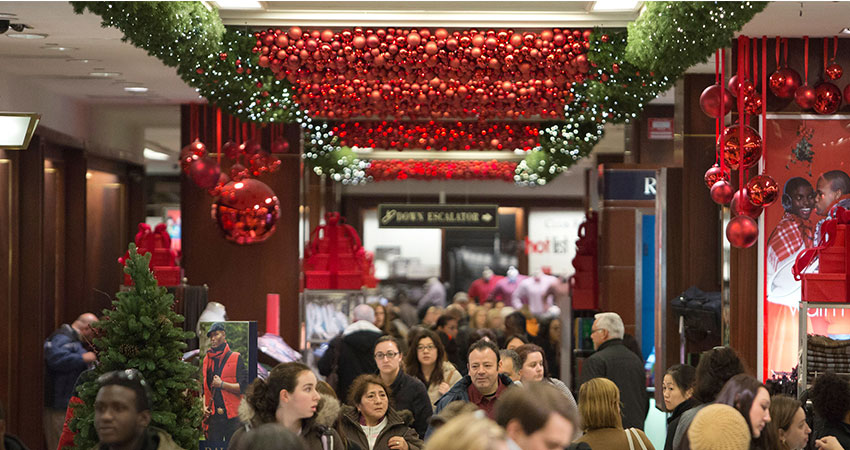Twenty-nine percent of holiday shoppers in the U.S. aged 18-34 plan to spend the most money in physical stores this season, a number that rises to 39% for all age groups, according to a new study from consultancy Capgemini.
The survey of 6,700 holiday shoppers across France, Germany, Spain, the UK and the U.S. shows 37% of younger consumers would spend the most online with retailers offering access to multiple brands, with that figure dropping to 32% for those 35 and older.
Preference variations among age groups matter because 40% of the younger demographic plan to spend more money on holiday shopping this year, a figure that drops to 28% for all age groups.
No matter how much and where holiday shoppers are spending, the key factors driving decisions are cost, quality and convenience.
Asked to choose the top three factors influencing gift purchasing decisions, cost reductions, sales and discounts ranked as equally important as the quality of products, both cited by 54% of respondents. Next was variety of products offered, at 50%.
In concert with those results, 34% of respondents listed the variety and range of products available as the primary factor for choosing one retailer over another, when not considering price as a factor. Twenty-one percent listed the convenience of an outlet’s location.
Delivery speeds that are becoming the ecommerce norm, notably overnight and same day, were not a key priority for those surveyed. A third of those surveyed said three working days was the norm.
Shannon Warner, vice president of Capgemini’s North American retail practice, said while expectations for grocery delivery is a couple of hours, shoppers are generally willing to accept longer times from retailers.
“Where a customer lives is another significant factor in how quickly they expect delivery,” Warner said. “Urban consumers have much higher expectations for fast delivery. What’s definitely changed though is consumer’s willingness to wait for more than a week for delivery, to tolerate lack of transparent communication throughout the delivery process, and willingness to pay high fees for delivery.”
Not surprisingly, 33% of survey respondents listed maintaining or reducing prices as the thing they would most like to see from retailers. Selecting environmentally friendly products and packaging was a priority for 21% of all respondents and 24% of those 18-24. The survey found UK respondents most focused on sustainable packaging (cited by 29%), followed by Germany (21%) and France (19%). That figure dropped to 14% for the U.S. and Spain.
Key strategies for attracting younger shoppers should be built around technology, the survey found. Twenty-three percent of those aged 18-34 prefer automated checkout, compared to 16% for those older, 21% prefer mobile wallet payments, with just 12% of those older citing that preference.
In terms of voice-based shopping, the survey found consumers across demographic groups more likely to participate if the experience felt secure (cited by 25%), if it offered unique voice discounts (23%) or if it provided a straightforward experience (20%). For 18-to-24-year olds, those rates rose to 29%, 33% and 27%, respectively.
Warner said the quality of natural language recognition has improved dramatically, making voice-based shopping increasingly practical for consumers. Smart speakers with built-in screens are allowing brands to market to shoppers and encourage more voice commerce.
“It will be interesting to watch what other brands (besides Amazon) do over the holidays and how customers respond,” she said. “Since voice-based commerce solutions generally use the traditional ecommerce rails and stored payments, the security protocols will be largely the same.”

